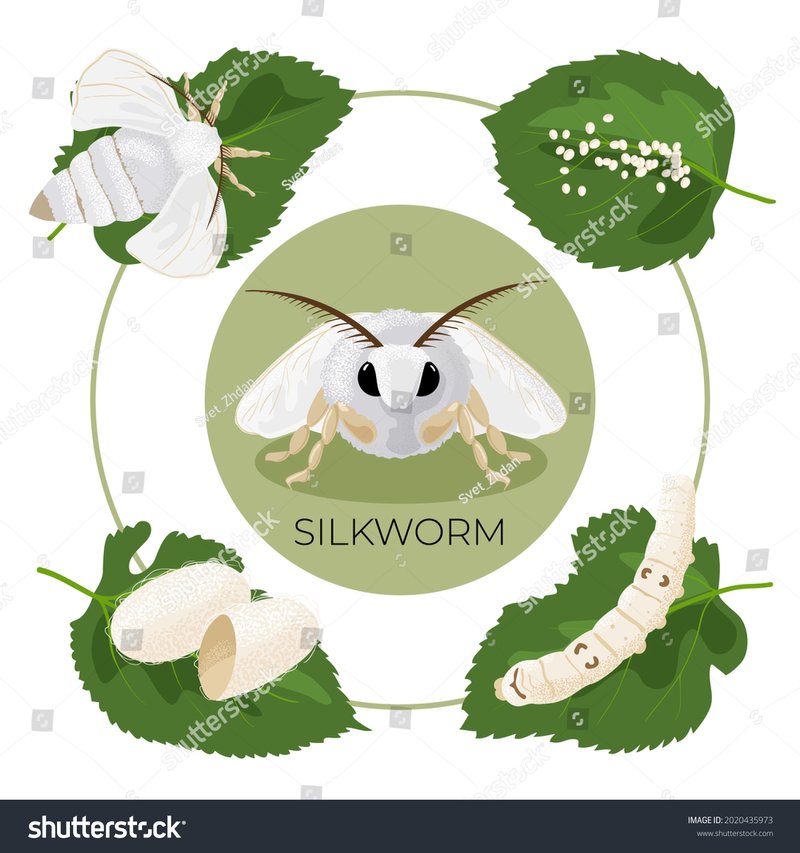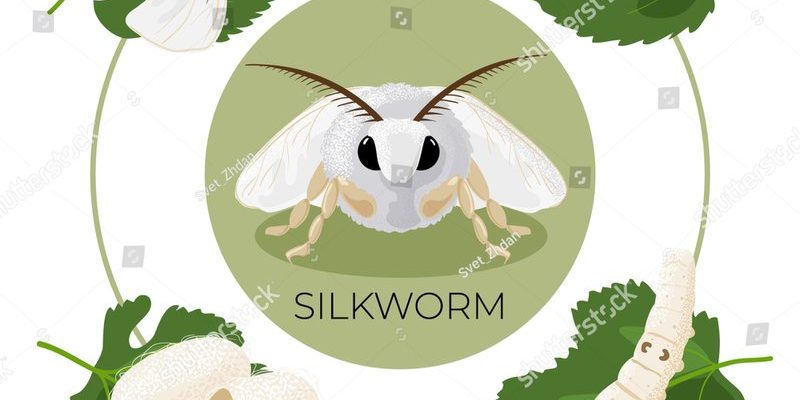
Now, you might be wondering how a remote control fits into this story. Actually, it doesn’t. But understanding the **stages of silkworm development** can feel a bit like troubleshooting a tech gadget. Each step is vital, and if you miss one, you may not get the result you want. So grab your favorite drink, and let’s dive into the remarkable lifecycle of the silkworm, complemented with some helpful visual charts along the way.
The Life Cycle of a Silkworm: An Overview
Before we dive into the myriad phases, let’s outline what the silkworm lifecycle generally looks like. The silkworm, or *Bombyx mori*, primarily undergoes four distinct stages: egg, larva (caterpillar), pupa (cocoon), and adult moth. Each stage has unique characteristics and requirements—much like how your remote control operates differently depending on whether it’s paired, syncing, or simply running low on battery.
– **Egg:** Tiny and oval in shape, these eggs are laid by the female moth on mulberry leaves. They are delicate and can easily be affected by temperature and humidity.
– **Larva:** Once they hatch, the larvae (or caterpillars) are voracious eaters, consuming mulberry leaves to grow rapidly. They go through several molts, shedding their skin multiple times.
– **Pupa:** After reaching a certain size, the caterpillars find a secure spot and spin a silk cocoon around themselves. This is where they undergo transformation.
– **Adult:** Finally, the mature moth emerges from the cocoon, ready to start the cycle all over again.
Understanding this cycle is essential—not only for silk production but also for introducing young minds to the world of biology.
The Egg Stage: Beginnings of Life
At the very start of the silkworm’s journey is the **egg stage**. The female moth lays hundreds of tiny eggs, usually in clusters on the underside of mulberry leaves. These eggs are about the size of a pinhead and are typically pale yellow to white.
This stage may seem simple, but it’s pivotal. The eggs require specific conditions to hatch effectively—ideal temperature and humidity levels are critical. If the environment is too dry or too humid, the eggs may not hatch at all. Think of it like planting seeds in a garden. If the soil isn’t just right, those seeds won’t grow into healthy plants.
After about 10 days, the eggs will hatch, releasing tiny larvae. During this time, the eggs are incredibly vulnerable to predators and environmental factors, so caring for them properly is crucial for a successful lifecycle.
The Larval Stage: Growth and Change
Once hatched, the silkworm enters the *larval stage*, commonly referred to as the caterpillar stage. This phase is all about eating! Silkworms are known for their insatiable appetite, and they primarily feed on mulberry leaves.
This stage is characterized by several molting periods. As the caterpillar grows, it sheds its skin 4-5 times, a process known as instar. Each molting allows the silkworm to grow significantly. You might compare it to how we outgrow clothes—we just can’t fit into the same outfit forever! After about 25 to 30 days of continuous munching and growing, the larva can reach up to 3 inches long.
During this period, it’s essential to monitor their diet closely. Just as you wouldn’t expect your remote to work properly with dead batteries, a silkworm won’t thrive without a steady supply of fresh mulberry leaves.
The Pupal Stage: Transformation in a Cocoon
After reaching their maximum size, silkworms enter the *pupal stage*, where they spin their silk cocoon. This is one of the most fascinating aspects of their lifecycle. They produce a continuous thread of silk that can measure up to 1,000 meters long!
To start this process, the caterpillar finds a safe spot—often a quiet, secluded area—and begins to spin. It takes about three to eight days to complete the cocoon. The silkworm secretes a protein that hardens upon contact with air, eventually forming a protective shell around itself.
This phase can be likened to a software update on a device; it’s a time of change and transformation. Just as you need to allow your gadget some downtime to reach its full potential, the silkworm is in its most vulnerable state, transforming into a butterfly.
Once the cocoon is complete, the silkworm stays inside for about 10 to 14 days. The body undergoes significant changes, preparing for the final stage of its lifecycle.
The Adult Stage: Emergence of the Moth
After a couple of weeks nestled in their silk cocoons, the adult moth finally emerges. This stage is often the most celebrated part of the silkworm’s lifecycle. When the moth hatches, it’s initially soft and fragile, but it soon expands its wings and prepares to fly.
The emergence of the adult moth signifies the end of the silkworm’s transformation. This stage lasts about two weeks, during which the moth will search for a mate to reproduce. Once it lays the eggs, the cycle starts all over again!
Interestingly, adult moths do not eat. They rely on the energy stored during their larval stage. This lack of nourishment can be surprising—much like when your remote control seems to quit on you just when you need it because the batteries are dead. It’s a reminder that, after all that growth, they are ready for a rather short phase of life.
Visual Charts: A Guide Through the Lifecycle
To truly appreciate the silkworm’s journey, visual aids can make a big difference. Here’s a simple chart to summarize the stages of silkworm development:
| Stage | Description | Duration |
|---|---|---|
| Egg | Tiny, laid by the female moth; requires specific conditions | 10 days |
| Larva | Feeding through multiple molts; grows rapidly | 25-30 days |
| Pupa | Enters cocoon stage, transforming into a moth | 10-14 days |
| Adult | Moth emerges, ready to mate and lay eggs | 2 weeks |
This chart helps visualize not just the stages but also the time each phase takes. Keeping track of these stages can be quite beneficial, whether you’re studying biology, farming silkworms, or just curious!
The Importance of Silkworms in Culture and Industry
Silkworms have a rich history in human culture and industry. In many Asian countries, especially China, silkworm farming is a traditional practice that dates back thousands of years. The silk produced is not only used for clothing but also holds significance in art and history.
Furthermore, the **stages of silkworm development** offer insight into sustainable farming practices. By understanding their lifecycle, we can better care for them, ensuring healthy silk production. It’s quite similar to how understanding the battery life of your remote control can extend its usability—knowledge is power!
In recent years, there’s been a push towards eco-friendly silk production. Learning about each stage can inform practices that benefit both the environment and local economies.
The lifecycle of a silkworm is truly a wonder of nature. From the tiny eggs to the majestic moth, each stage is critical and fascinating. Understanding these stages not only deepens our appreciation for the silk that we often take for granted but also teaches us about resilience, growth, and change.
So next time you come across a piece of silk or see a butterfly fluttering by, remember the incredible journey it took to get there. Just like crafting the perfect content or operating a tech gadget, it’s all about respecting each phase of the process. Keep exploring, learning, and appreciating the wonderful world around you—one tiny silkworm at a time!

